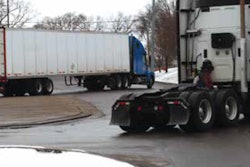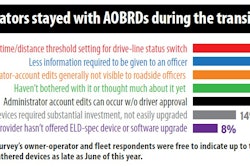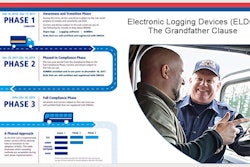Effective immediately, the Federal Motor Carrier Safety Administration has said it will allow drivers to use personal conveyance status to get to the nearest safe parking spot/rest location after hours are exhausted by a shipper/receiver, or off-duty periods are interrupted by law enforcement.
“The movement from a shipper or receiver to the nearest safe resting area may be identified as personal conveyance,” text of the clarification reads, “regardless of whether the driver exhausted his or her hours of service, as long as the CMV is being moved solely to enable the driver to obtain the required rest at a safe location.”
Comments to the proposed change that supported affirmative answers were made by several respondents, the agency notes in its Federal Register guidance, including the Crete Carrier fleet and owner-operator/Real Women in Trucking advocate Desiree Wood among others. Schneider National, too, “asked for clarification” of the issue, FMCSA said.
The agency also announced Thursday changes to guidance around the 150-air-mile-radius agricultural commodity hours of service exemption. Both changes were put forward ahead of the Dec. 18, 2017, compliance deadline for the agency’s electronic logging device mandate and pitched as providing clarity and some additional flexibility for drivers.
The new interpretation of when it is legal to use a truck for personal conveyance allows use of personal conveyance whether the truck is loaded or not. Perhaps more significantly, the guidance provides relief for owner-ops and drivers hopeful for an answer to the question of whether it’s appropriate to use a personal conveyance status to
FMCSA Enforcement and Compliance Director Joe DeLorenzo emphasized a key point that might apply more broadly to other scenarios where personal conveyance for the purpose of getting “to your safe place to rest. It’s all about why you’re making that particular movement,” in the end.
Generally, personal conveyance use has not been allowed for any move intended to further the direction of the current or next dispatch, and is intended as truly personal use of the truck, outside the stream of commerce. Further clarifying the change in personal conveyance interpretation, the agency noted it recognized that “the driver may not be aware of the direction of the next dispatch and that in some instances the nearest safe resting location may be in the direction of that dispatch. If the driver proceeds to the nearest reasonable and safe location and takes the required rest, this would qualify as personal conveyance.”









